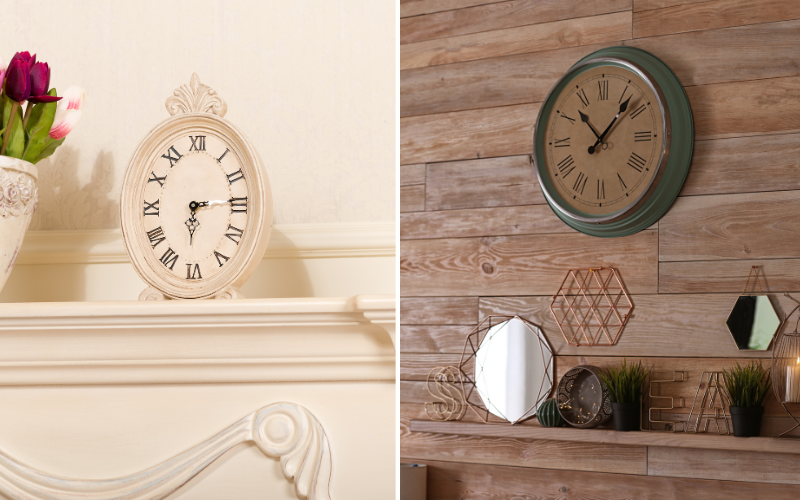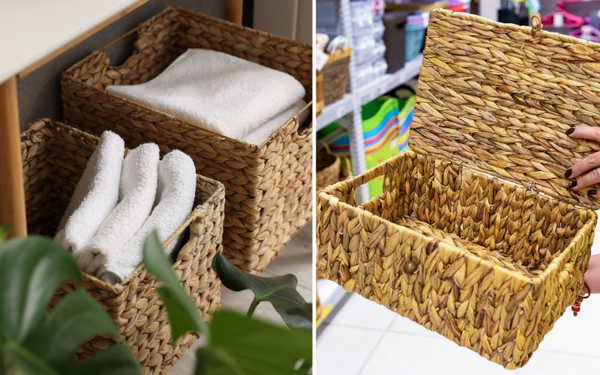Mantel clocks, traditional timepieces that adorn fireplaces and bookshelves, have garnered numerous names reflecting their use and placement in homes. What are mantel clocks called, and why do these names vary? Simply put, aside from being known as ‘mantel clocks’, they are also referred to as ‘shelf clocks’ when placed on shelves and ‘table clocks’ for sitting elegantly on tables. Furthermore, ‘mantle clocks’ is a common alternate spelling. This article delves into the nomenclature and evolution of these classic timepieces, offering insights into their decorative and historical significance, while answering the question, “what are mantel clocks called?”
Key Takeaways
- Mantel clocks are called by various names such as ‘shelf clocks,’ ‘table clocks,’ and ‘mantle clocks,’ reflecting their versatility in placement and usage within home decor.
- The design and craftsmanship of mantel clocks have evolved over time, showcasing different styles from the Gothic-inspired steeple clocks of the 19th century to the geometric Art Deco designs of the 20th century, using diverse materials like wood, brass, marble, and porcelain.
- Mantel clocks encompass both traditional mechanical movements, requiring winding, and modern quartz movements powered by batteries, demonstrating the blend of historic engineering and contemporary technology in timekeeping.
The Nomenclature of Mantel Clocks

Mantel clocks, versatile in nature, go by various names. These compact timepieces, typically placed on fireplace mantels, are often dubbed as:
- ‘shelf clocks’ due to their aptness for flat surfaces like shelves or mantelpieces, sometimes referred to as a ‘shelf clock’
- ‘table clocks’, a nod to their capability to enhance various furniture pieces
- ‘mantle clocks’, underscoring their traditional placement by the hearth.
Shelf Clocks: A Common Moniker
‘Shelf clocks’, a term used fondly, appreciates the careful design of mantel clocks crafted to adorn flat surfaces like shelves or mantelpieces. This term not only signifies their placement but also exalts the meticulous design that enables these timepieces to blend effortlessly into any interior décor. From simplistic designs to ornate masterpieces, these shelf clocks can infuse a touch of elegance into any room, making them a beloved décor element.
While their compact size makes them perfect for shelves, the real magic lies in their versatility. No matter where you place them, these timepieces manage to create a captivating focal point. Whether it’s a cozy reading nook or an office desk, mantel clocks can transform a simple shelf into an exhibit of timeless elegance.
Table Clocks: The Versatile Timekeepers
Mantel clocks, versatile by design, are quite familiar with tables. Their compact and portable nature makes them ideal as table clocks, allowing easy movement and adaptability to diverse locations within a room. But what sets them apart is their ability to infuse a sense of timelessness into any setting, making timekeeping an elegant affair.
In contemporary homes, mantel clocks have evolved beyond their traditional mantelpiece placement. As table clocks, they find their home on various furniture pieces—bookcases, side tables, and even kitchen counters. No longer confined to fireplaces, these timekeepers continue to enrich homes with their enduring charm, wherever they are placed.
Mantle Clocks: The Hearthside Companion
The alternate spelling ‘mantle clocks’ emphasizes the traditional placement of these timepieces. Perched elegantly above the fireplace, these clocks were once the heart of the living room, ticking rhythmically alongside the warm crackle of the fire.
The compact size of these smaller clocks allowed them to fit neatly on the mantelpiece, effortlessly becoming a central decor piece in living spaces. They were more than just timekeepers—they were the hearthside companions that added a touch of luxury and elegance to homes, resonating with the warmth of shared moments and cherished memories.
Evolution of the Mantel Clock Design
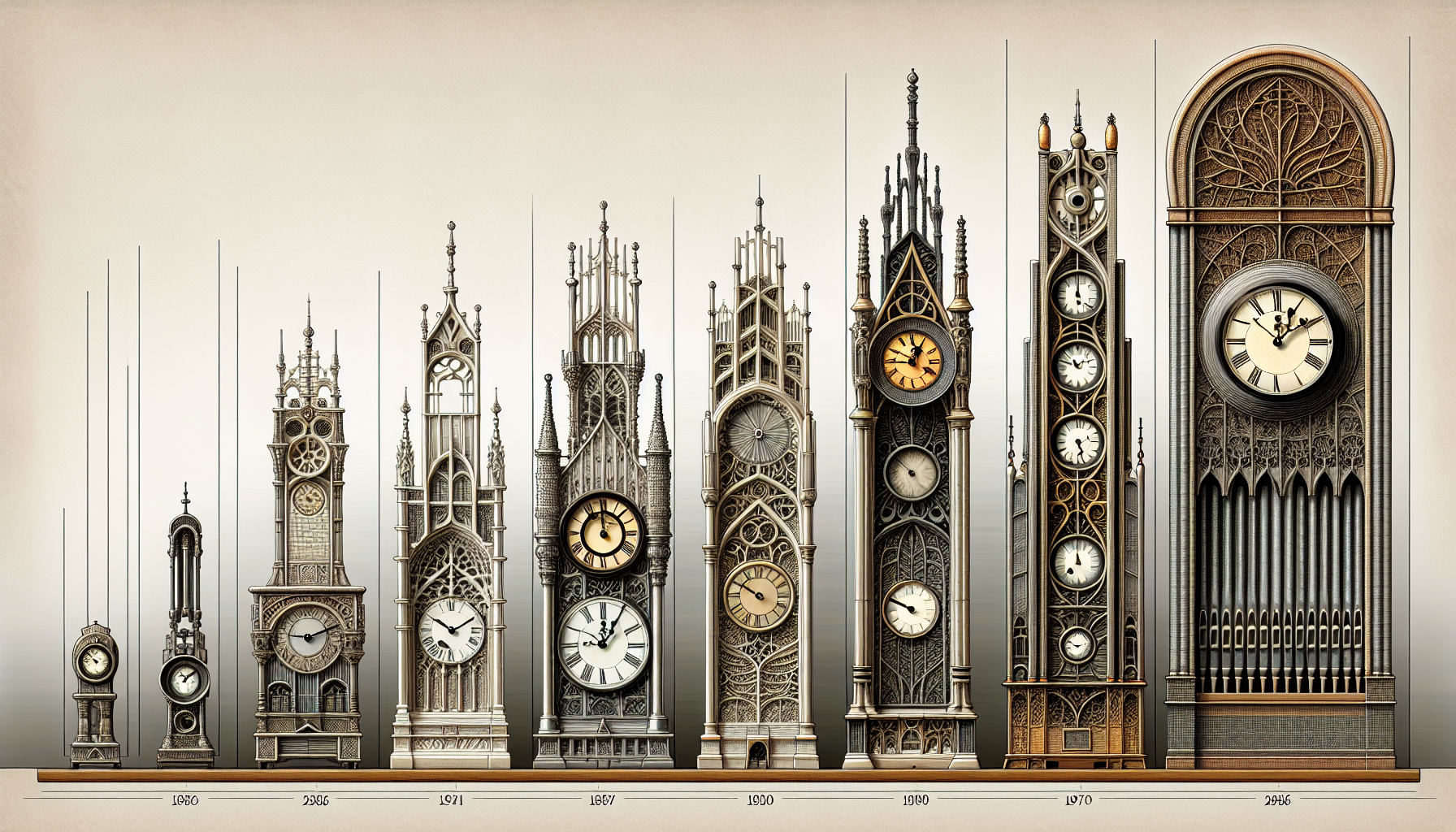
The design of mantel clocks, like time itself, has elegantly evolved, mirroring the aesthetics and craftsmanship of different eras. From Gothic-inspired steeple styles to geometric Art Deco designs and contemporary interpretations, mantel clocks have continued to charm generations with their evolving styles and materials.
From Gothic Architectural Styles to Geometric Sleek Style
In the 19th century, Gothic architectural styles significantly influenced mantel clock designs. The steeple style mantel clock, introduced in 1845, was a direct reflection of this influence, echoing the form of church steeples in its design. Elias Ingraham’s original designs of steeple mantel clocks were a testament to the intricate aesthetic of the Gothic era, carrying the weight of historical charm in their structure.
The onset of the 20th century marked a significant shift from the Gothic-inspired styles. The geometric sleek designs of the Art Deco era started to influence mantel clocks from the 1930s to 1960s. This shift from the ornate Victorian era to the clean lines and distinct geometry of Art Deco was a significant evolution in the design of mantel clocks. It wasn’t just a change in aesthetics; it was a reflection of a new era, marking mantel clocks as timeless artifacts that mirror the changing times.
Material Matters: Wood, Metal, and Beyond
The materials used in mantel clocks are a testament to their rich history and evolving craftsmanship. Mantel clocks have seen a diverse range of materials in their construction, including:
- Wood
- Brass movements
- Onyx
- Marble
- Slate
- Rare porcelain
During the Civil War years, wooden mantel clocks were adorned with sleek lines or elaborate carvings and painted scenes, adding to their charm and appeal.
The choice of materials often provides valuable insight into the age of a vintage mantel clock. High-quality oak and mahogany suggest an older clock, while industrial-era materials like plastic and Bakelite indicate a more recent creation. Beyond their aesthetic appeal, the materials of a mantel clock also determine its maintenance and restoration techniques, crucial for its longevity.
The Mechanics Behind Mantel Clocks
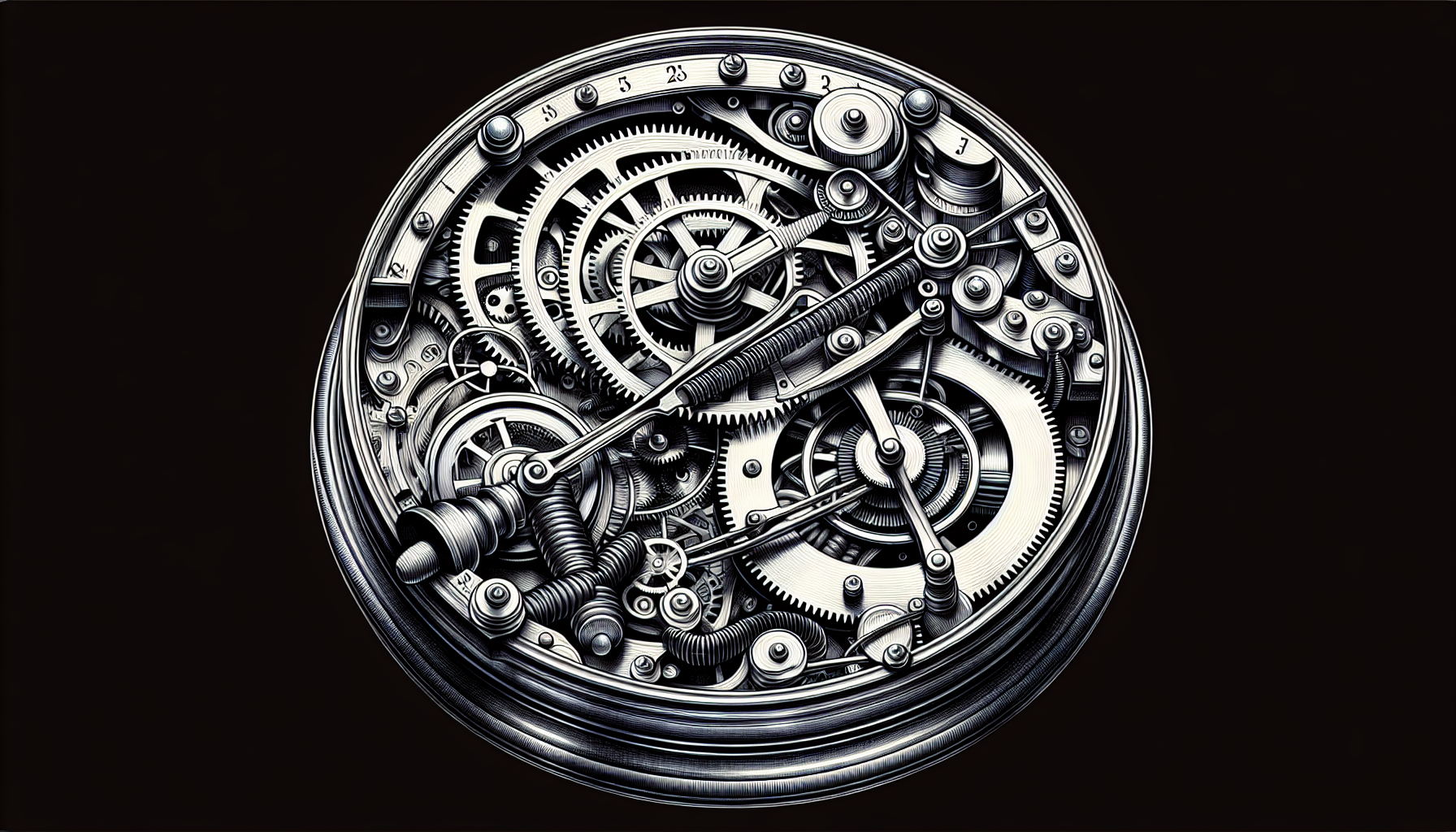
Mantel clocks are not merely attractive—they are also wonders of mechanical engineering. From their humble beginnings with key-wound spring mechanisms in the 18th century to the modern quartz movement powered by batteries, the mechanics behind mantel clocks are a fascinating blend of innovation and tradition.
The Charm of Mechanical Movement
Mechanical mantel clocks, a subset of mechanical clocks, stand as a tribute to the allure of traditional timekeeping. These clocks rely on key-wound spring mechanisms, where the unwinding energy of the mainspring powers the clock’s gears and hands. This intricate mechanism brings a sense of tangible connection to time—a rhythm set in motion with each winding.
The ritual of winding a mechanical clock holds a unique charm, providing a tactile feedback and a sense of engagement with the passage of time. Most mechanical mantel clocks require winding once a week, ensuring the spring is tight and the clock maintains accurate time. This timeless ritual, a consistent aspect of their maintenance over centuries, brings a sense of nostalgia, connecting us to the past as we engage with the present.
Embracing Modern Power Source: Quartz Movement
Quartz mantel clocks exemplify the acceptance of contemporary technology in timekeeping. These clocks utilize a battery to send a current through a quartz crystal, causing it to vibrate and drive the clock’s motor and hand movement. This mechanism offers precise timekeeping with minimal maintenance, making quartz clocks a popular choice in modern homes.
The use of battery power not only simplifies the maintenance but also adds to the versatility of mantel clocks. With no need for winding or adjusting, quartz mantel clocks can effortlessly fit into our fast-paced lives, keeping time with grace and precision.
As we embrace the future, these contemporary mantel clocks continue to echo the timeless charm of mantel clocks and grandfather clock, fusing tradition with innovation.
Signature Features of Mantel Clocks
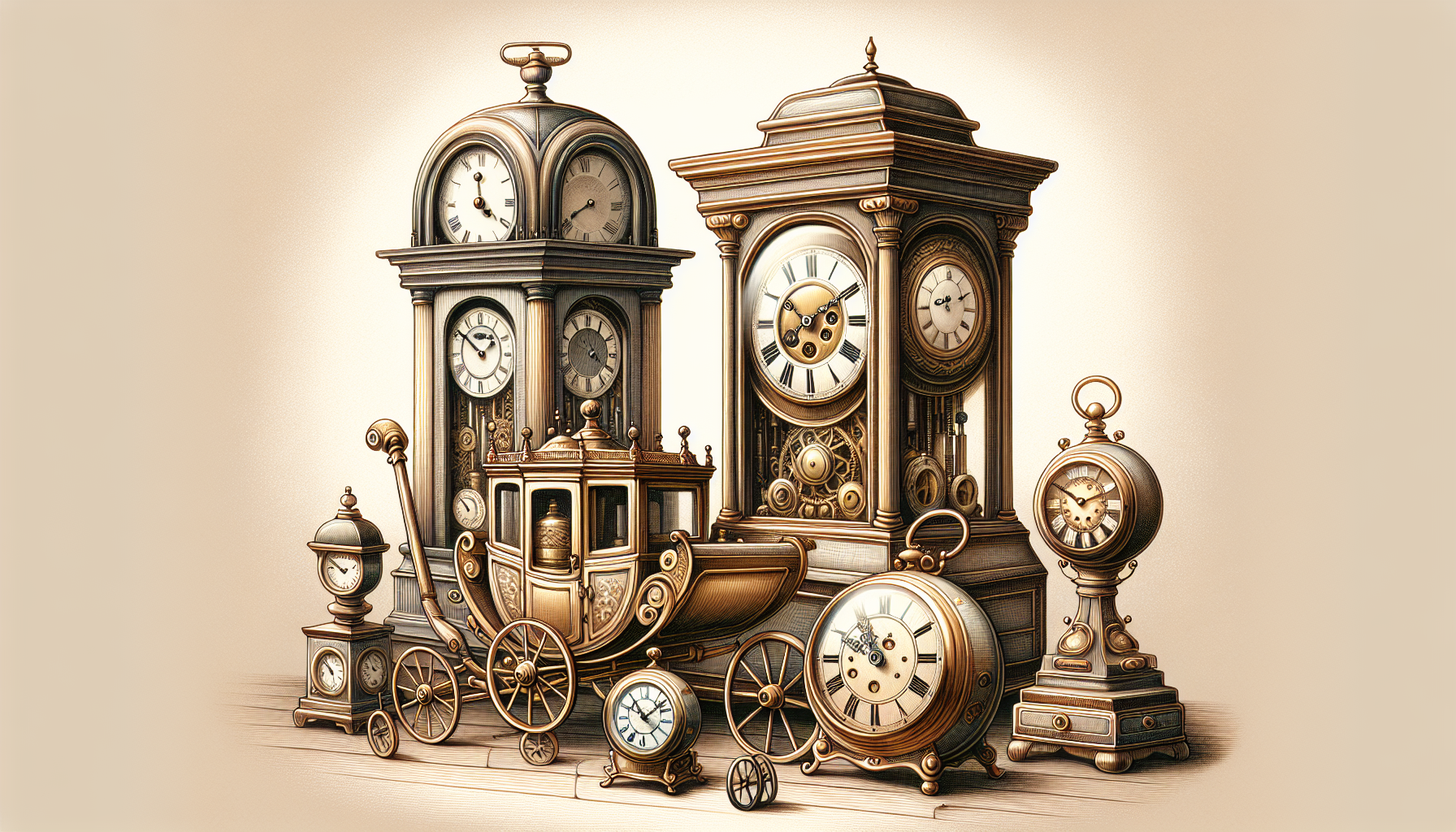
Mantel clocks stand out due to their distinctive designs, with each style possessing a unique feature that differentiates it. From the carrying handles of carriage clocks to the upright drum cases of tambour clocks, these designs are a testament to the ingenuity and creativity of clockmakers over the centuries.
Clock Faces: The Visage of Time
The clock face, often called the dial, is the visage of time in a mantel clock. While most analog clocks have a circular face, mantel clocks have also been designed with square, rectangular, and even novelty shapes. These faces usually feature numbers from one to twelve spaced evenly around the edge, with key reference numbers placed at twelve, three, six, and nine to ensure even spacing of the other numbers.
The motion of the hands on an analog clock face tells the tale of time. Each tick of the shorter hour hand and the longer minute hand represents the passing moments, marking the rhythm of our lives. In the world of mantel clocks, including the renowned Seth Thomas clocks, the clock face is not just a time indicator—it’s the signature of style, a canvas for creativity, and a window to the heart of timekeeping.
Sturdy Construction and Decorative Elements
Mantel clocks are known for their:
- Solid construction
- Decorative elements
- Flat base and often featuring weights for stability
- Designed to stand securely on mantelpieces or shelves
- Decorative brackets, initially created as a design feature, add to their overall elegance
Making them a captivating addition to any décor.
Beyond their solid construction, most mantel clocks are often adorned with intricate details and embellishments. Some common decorative enhancements include:
- Glass tablets near the dial
- Ornate lion paw motifs
- Carvings and engravings
- Inlay work
- Painted designs
These decorative elements elevate the aesthetic appeal of mantel clocks, transforming them from simple timekeepers to works of art.
As we admire the sturdy construction and delicate details of mantel clocks, it is evident that these timepieces are more than just instruments of time—they are a testament to the marriage of functionality and art.
Comparison: Mantel Clocks vs. Bracket Clocks

Although mantel clocks and bracket clocks both hold a position in the history of timekeeping, their design and purpose set them apart. Let’s explore these differences and delve into the unique characteristics that set mantel clocks and bracket clocks apart.
Bracket Clocks: The True Portable Timepiece
Bracket clocks, crafted in the late 1600s, were conceptualized considering portability. Their features include:
- Spring-powered mechanism, making them more portable than other timepieces of their era
- Sturdy rectangular body, built to resist movement and travel
- Reliability as a companion for voyages
Equipped with a handle for easy transportation, these portable timekeepers could be carried around with ease, reflecting their utility as a travel-friendly timepiece. The robust construction, often focusing on metal materials, enabled these clocks to handle the rigors of travel, making them a true testament to the ingenuity of early clockmakers.
Mantel Clocks: The Modern Heirloom
Unlike the portable bracket clocks, mantel clocks are intended for static display. Originating in the 1750s, these timepieces were crafted to adorn mantels and shelves within homes, showcasing their beauty and craftsmanship. Their designs often incorporate stands and flat bases, catering to their primary purpose as stationary pieces of decor.
Unlike their portable predecessors, modern mantel clocks are intended to remain in place. Serving as contemporary heirlooms, they carry the legacy of timekeeping through generations, marking the passing moments in our homes and lives.
Whether embellishing a mantelpiece or adorning a bookshelf, mantel clocks continue to stand as timeless symbols of elegance and refinement.
Collecting and Caring for Antique Mantel Clocks
Many find the appeal of antique mantel clocks hard to resist. Their vintage charm, intricate designs, and historical significance make them a treasure to collect. However, collecting and caring for these timepieces requires a careful understanding of their history, maker’s marks, and proper maintenance techniques.
Tips for Clock Collectors
For clock collectors, the excitement stems from revealing the stories concealed behind the ticking hands. Maker’s marks are invaluable for authenticating an antique mantel clock, providing crucial information about the manufacturer or retailer. In addition, the original finish of a vintage wood clock case can often be hidden under layers of dirt, waiting to be discovered by a discerning eye.
Clocks crafted by notable makers such as Simon Willard are considered American masterpieces and are highly sought after, reflecting in their value. The age of an antique mantel clock can often be estimated by examining the maker’s mark. However, this research can be daunting for beginners. Thankfully, various reference books and online resources can assist in this journey, making the process of collecting and preserving these timepieces a rewarding experience.
Maintenance and Preservation
Preserving the allure and functionality of antique mantel clocks demands meticulous attention and care. Regular cleaning, oiling, and servicing of the clock mechanism are crucial procedures for its upkeep. Antique mantel clocks, in particular, require oiling every four to five years and professional servicing every decade to ensure their smooth operation and longevity.
The maintenance extends beyond the mechanism to the clock case as well. Restoring the original finish of a vintage wood clock case requires gentle cleaning and regular polishing, preserving its aesthetic appeal. It is advisable to avoid silicone-based spray polishes which can clog the wood’s pores and grain, affecting its luster and longevity.
As we care for these antique timepieces, we are not just preserving their beauty and function—we are safeguarding a piece of history for future generations.
Summary
From their humble beginnings as hearthside companions to their evolution as modern heirlooms, mantel clocks have stood the test of time. Their rich history, versatile designs, and intricate mechanics continue to captivate us, echoing the rhythm of time in their ticking hands. As we admire their beauty and craftsmanship, we realize that these timepieces are more than just instruments of time—they are artifacts of innovation, elegance, and tradition. As we wind the key or replace the battery, we are not just keeping time, but also preserving a legacy—a legacy that will continue to tick, marking the rhythm of our lives, one second at a time.
Frequently Asked Questions
Why are mantel clocks also called shelf clocks and table clocks?
Mantel clocks are also called shelf clocks and table clocks because of their compact design, allowing them to be placed on various flat surfaces like shelves, tables, and mantelpieces.
How have the designs of mantel clocks evolved over time?
Mantel clock designs have evolved from Gothic-inspired steeple styles to sleek geometric Art Deco designs, reflecting the aesthetics of different eras. The evolution showcases the influence of different historical periods on design.
What's the difference between mechanical and quartz mantel clocks?
In conclusion, mechanical mantel clocks use key-wound spring mechanisms, while quartz mantel clocks use battery power, providing more precise timekeeping and lower maintenance.
How do mantel clocks differ from bracket clocks?
Mantel clocks are designed for stationary display, while bracket clocks are designed for portability with a carrying handle and sturdy case. Therefore, the key difference lies in their intended use and design.
What are some tips for collecting and caring for antique mantel clocks?
To collect and care for antique mantel clocks, it's essential to research maker's marks, materials, and designs, and regularly clean, oil, and have them professionally serviced. This will help authenticate and estimate the age of the clocks and maintain their appearance and functionality.
You Might Also Like...
